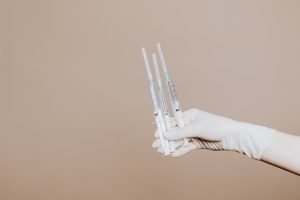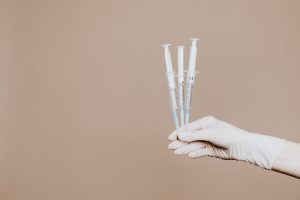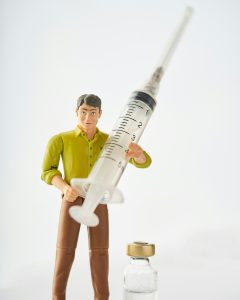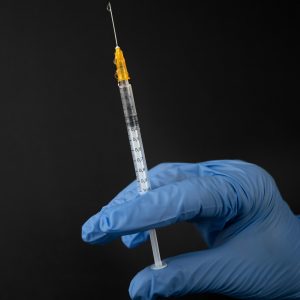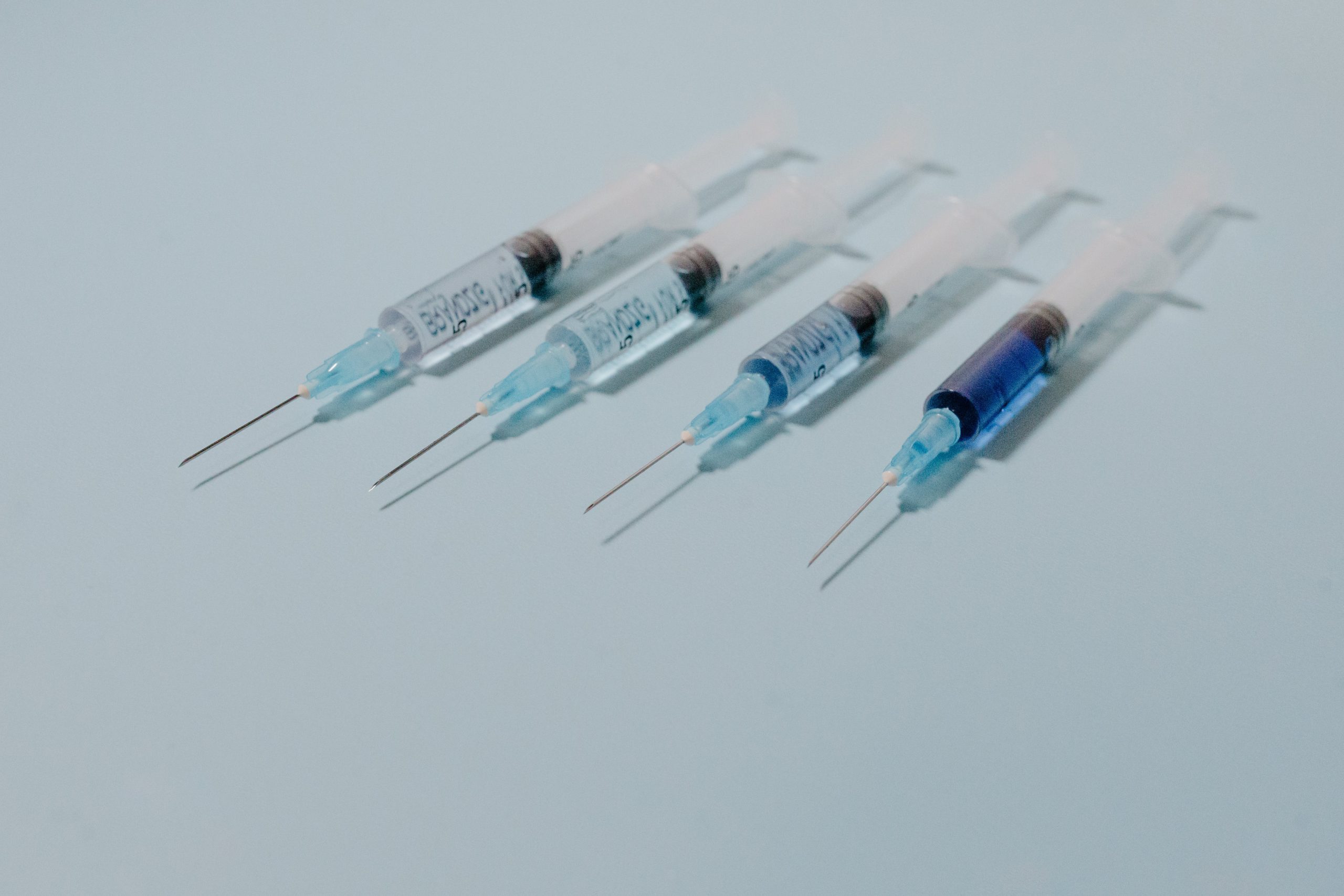
- What are Testosterone Esters?
- How are Testosterone Esters Administered?
- What is the Purpose of Testosterone Esters?
- Which Testosterone Esters are Commonly Available?
- Are There Any Side Effects of Testosterone Esters?
- Are Testosterone Esters Available Over-the-Counter?
What are Testosterone Esters?
Testosterone esters are synthetic derivatives of testosterone, the primary male sex hormone. Chemically modified by attaching an ester group, these compounds influence the hormone’s release and duration of activity. Common forms include testosterone propionate, enanthate, and cypionate, each with unique pharmacokinetic profiles.
Administered through intramuscular injections, testosterone esters are utilized in hormone replacement therapy (HRT) to address conditions like hypogonadism and restore testosterone levels. The esterification process allows for controlled release from fatty tissue storage, determining the frequency of injections needed.
Testosterone esters play a crucial role in medicine, promoting the development of secondary sexual characteristics in delayed puberty and addressing hormonal imbalances. The choice of ester depends on the desired duration of action and individual patient needs. While beneficial for medical purposes, it’s essential to note that misuse, particularly for performance enhancement, can lead to adverse effects and is considered unethical. Overall, testosterone esters serve as a valuable tool in managing hormonal deficiencies and related conditions under proper medical supervision.
How are Testosterone Esters Administered?
Testosterone esters are typically administered through intramuscular injections. This mode of administration ensures a controlled and sustained release of the hormone into the bloodstream. The injection is usually given into the muscles of the buttocks (gluteal muscles) or the muscles of the thigh.
The choice of specific testosterone ester and injection frequency depends on factors such as the individual’s medical condition, treatment goals, and the desired duration of hormonal activity. Different esters have distinct release profiles, influencing how often injections are required.
Common testosterone esters used in medical settings include testosterone propionate, testosterone enanthate, and testosterone cypionate. Testosterone propionate, being a short-acting ester, may require more frequent injections compared to the longer-acting enanthate and cypionate.
It’s crucial for individuals undergoing testosterone replacement therapy (TRT) to follow their healthcare provider’s guidance regarding the prescribed ester, dosage, and injection schedule. Regular monitoring and adjustments are often part of the treatment plan to ensure optimal hormone levels and minimize potential side effects.
What is the Purpose of Testosterone Esters?
The primary purpose of testosterone esters is to address conditions associated with low testosterone levels in the body. Testosterone is a crucial hormone responsible for various physiological functions, particularly in males. Testosterone esters are synthetic derivatives designed to supplement or replace naturally occurring testosterone, serving the following purposes:
- Hormone Replacement Therapy (HRT):
- Testosterone esters are commonly used in hormone replacement therapy to treat hypogonadism, a condition where the body doesn’t produce enough testosterone. This therapy helps restore normal testosterone levels, alleviating associated symptoms.
- Management of Andropause:
- As men age, testosterone levels may decline, leading to symptoms such as fatigue, reduced libido, and mood changes. Testosterone replacement therapy with esters can be prescribed to manage these age-related changes.
- Delayed Puberty:
- In cases of delayed puberty in boys, where the development of secondary sexual characteristics is behind schedule, testosterone esters may be administered to induce the maturation process.
- Treatment of Certain Medical Conditions:
- Testosterone therapy may be considered for various medical conditions associated with testosterone deficiency, including certain genetic disorders and testicular disorders.
The controlled release and duration of activity provided by testosterone esters contribute to maintaining stable hormone levels, helping individuals achieve improved well-being and quality of life. However, the use of testosterone esters should always be supervised by healthcare professionals, and treatment plans should be tailored to individual needs and monitored for efficacy and safety.
Which Testosterone Esters are Commonly Available?
Testosterone Phenylpropionate
Testosterone Phenylpropionate is a synthetic testosterone ester, a derivative of the naturally occurring male sex hormone testosterone. It is designed to provide a more prolonged and sustained release of testosterone when compared to unmodified testosterone. This esterified form includes a phenylpropionate ester attached to the testosterone molecule, influencing its pharmacokinetics.
Used primarily in hormone replacement therapy (HRT) and occasionally in bodybuilding, Testosterone Phenylpropionate is administered through intramuscular injections. Its ester modification allows for a slower release into the bloodstream, reducing the frequency of required injections.
Similar to other testosterone forms, Testosterone Phenylpropionate contributes to the development and maintenance of male reproductive tissues, supports muscle and bone growth, and influences secondary sexual characteristics. While it is not commonly prescribed as a standalone therapy, it is often part of testosterone blend formulations.
As with any hormone therapy, the use of Testosterone Phenylpropionate should be supervised by qualified healthcare professionals to manage potential side effects and ensure optimal therapeutic outcomes. The misuse of testosterone or its derivatives for non-medical purposes, such as performance enhancement, is against the rules of most sports organizations and carries health risks.
Characteristics:
- Ester Type:
- Testosterone Phenylpropionate is a short-acting ester of testosterone.
- Chemical Structure:
- The phenylpropionate ester is attached to the testosterone molecule, influencing its solubility and release profile.
- Half-Life:
- Testosterone Phenylpropionate has a relatively short half-life compared to longer-acting esters like enanthate or cypionate. This means it is metabolized and cleared from the body more rapidly.
Administration:
- Injection Frequency:
- Testosterone Phenylpropionate is typically administered more frequently than longer-acting esters. In some cases, it may require injections every 1 to 3 days.
- Dosage:
- The specific dosage can vary depending on individual needs, the severity of testosterone deficiency, and the treatment goals.
- Injection Sites:
- Like other testosterone esters, Testosterone Phenylpropionate is administered through intramuscular injections. Common injection sites include the muscles of the buttocks (gluteal muscles) or the muscles of the thigh.
- Medical Supervision:
- Administration of Testosterone Phenylpropionate, as with any testosterone ester, should be performed under the supervision of a healthcare professional. Regular monitoring of hormone levels and potential side effects is crucial to ensure effective and safe treatment.
- Treatment Plans:
- The frequency and dosage of Testosterone Phenylpropionate injections are often part of an individualized treatment plan. This plan is designed based on factors such as the patient’s response to the therapy, medical history, and specific treatment goals.
It’s essential for individuals undergoing testosterone replacement therapy to strictly follow their healthcare provider’s guidance regarding the administration of Testosterone Phenylpropionate or any other testosterone ester. This helps optimize the therapeutic benefits while minimizing potential side effects.
Testosterone Isocaproate
Testosterone Isocaproate is a synthetic esterified form of testosterone, a crucial male sex hormone responsible for various physiological functions. As an ester, Testosterone Isocaproate is chemically modified to allow for a slower release of testosterone into the bloodstream after administration. This modification extends the hormone’s duration of action, reducing the frequency of required injections compared to unmodified testosterone.
Commonly used in testosterone replacement therapy (TRT) and among bodybuilders, Testosterone Isocaproate is administered via intramuscular injection. It is part of testosterone blend formulations, combining multiple testosterone esters to achieve a more sustained release of the hormone.
Similar to other forms of testosterone, Testosterone Isocaproate promotes the development and maintenance of male reproductive tissues, supports muscle and bone growth, and influences secondary sexual characteristics. While it is not typically prescribed for medical use on its own, it contributes to testosterone formulations designed to address conditions associated with low testosterone levels, such as hypogonadism. As with any hormone therapy, its use should be supervised by qualified healthcare professionals to manage potential side effects and ensure optimal therapeutic outcomes.
Characteristics:
- Ester Type:
- Testosterone Isocaproate is a medium- to long-acting ester of testosterone.
- Chemical Structure:
- The isocaproate ester is attached to the testosterone molecule, influencing its release and duration of activity.
- Half-Life:
- Testosterone Isocaproate has a longer half-life compared to short-acting esters like propionate, but it is shorter than some of the longer-acting esters like enanthate or cypionate.
Administration:
- Injection Frequency:
- Testosterone Isocaproate is typically administered less frequently than short-acting esters. The injection frequency can vary, but it may be given every 7 to 10 days.
- Dosage:
- The specific dosage of Testosterone Isocaproate is determined based on individual factors such as the severity of testosterone deficiency, the patient’s response to the treatment, and the desired treatment goals.
- Injection Sites:
- Like other testosterone esters, Testosterone Isocaproate is administered through intramuscular injections. Common injection sites include the muscles of the buttocks (gluteal muscles) or the muscles of the thigh.
- Medical Supervision:
- Administration of Testosterone Isocaproate should be conducted under the supervision of a healthcare professional. Regular monitoring of hormone levels and potential side effects is essential for ensuring the effectiveness and safety of the treatment.
- Individualized Treatment Plans:
- The frequency and dosage of Testosterone Isocaproate injections are often part of an individualized treatment plan. This plan is tailored to the patient’s specific needs, response to the therapy, and overall health.
It’s crucial for individuals undergoing testosterone replacement therapy to adhere to their healthcare provider’s guidance regarding the administration of Testosterone Isocaproate. This helps optimize the therapeutic benefits while minimizing potential side effects. Regular follow-ups with a healthcare professional are typically recommended to assess the ongoing efficacy and safety of the treatment.
Testosterone Undecanoate
Testosterone Undecanoate is a synthetic form of testosterone, a crucial male sex hormone. Unlike some other testosterone formulations, Testosterone Undecanoate is an esterified oral form of the hormone. It is used to address conditions associated with low testosterone levels, such as hypogonadism, by supplementing or replacing the natural testosterone in the body. This medication is typically prescribed for long-term testosterone replacement therapy (TRT) and is administered orally, usually with a fatty meal, to enhance absorption.
Testosterone Undecanoate has a unique characteristic in that it undergoes a two-step enzymatic conversion in the liver, resulting in a prolonged release of testosterone into the bloodstream. This slow-release mechanism allows for less frequent dosing compared to some other testosterone formulations. While Testosterone Undecanoate offers a convenient oral administration option, it is important to note that close medical supervision is necessary to monitor its effectiveness, potential side effects, and to ensure proper dosage adjustments based on individual response and health status.
Characteristics:
- Ester Type:
- Testosterone Undecanoate is a long-acting ester of testosterone.
- Chemical Structure:
- The undecanoate ester is attached to the testosterone molecule, influencing its solubility and release profile.
- Half-Life:
- Testosterone Undecanoate has a long half-life compared to shorter-acting esters. This results in a slower release and a more prolonged duration of hormonal activity.
Administration:
- Injection Frequency:
- Testosterone Undecanoate is unique among testosterone esters as it is often administered less frequently than other esters. It is typically given every 10 to 14 weeks in medical settings.
- Dosage:
- The specific dosage of Testosterone Undecanoate is determined based on individual factors such as the severity of testosterone deficiency, the patient’s response to treatment, and the desired treatment goals.
- Injection Sites:
- Testosterone Undecanoate is administered through intramuscular injections. The injections are commonly given in the gluteal muscles (buttocks).
- Nebido®:
- Nebido is a well-known brand of testosterone undecanoate, formulated for long-lasting effects. It simplifies administration by reducing the frequency of injections.
- Medical Supervision:
- Administration of Testosterone Undecanoate should be conducted under the supervision of a healthcare professional. Regular monitoring of hormone levels and potential side effects is crucial for ensuring the effectiveness and safety of the treatment.
- Individualized Treatment Plans:
- The frequency and dosage of Testosterone Undecanoate injections are part of an individualized treatment plan, considering the patient’s unique needs, response to therapy, and overall health.
Testosterone Undecanoate provides a convenient option for individuals seeking a longer duration between injections in testosterone replacement therapy. Adherence to healthcare provider recommendations is essential to optimize therapeutic benefits and minimize potential side effects. Regular follow-up appointments allow for adjustments to the treatment plan based on the patient’s progress.
Testosterone Cypionate
Testosterone Cypionate is a synthetic form of the naturally occurring male sex hormone, testosterone. It belongs to the class of drugs known as androgens and is commonly prescribed for the treatment of low testosterone levels in men, a condition known as hypogonadism. This medication is administered through intramuscular injection and is slowly released into the bloodstream over a period of several days.
Testosterone is crucial for the development and maintenance of male reproductive tissues and is responsible for various physiological functions such as muscle mass, bone density, and the distribution of body fat. Testosterone Cypionate helps address symptoms associated with low testosterone, including fatigue, reduced libido, and mood changes.
Athletes and bodybuilders also sometimes misuse Testosterone Cypionate to enhance muscle growth and performance, although this is not medically approved and may lead to adverse effects. Like any medication, it carries potential side effects, and its use should be closely monitored by healthcare professionals to ensure safety and efficacy.
Characteristics:
- Ester Type:
- Testosterone Cypionate is a long-acting ester of testosterone.
- Chemical Structure:
- The cypionate ester is attached to the testosterone molecule, influencing its release and duration of activity.
- Half-Life:
- Testosterone Cypionate has a relatively long half-life, contributing to a slower release into the bloodstream and an extended duration of hormonal activity.
Administration:
- Injection Frequency:
- Testosterone Cypionate is typically administered less frequently than short-acting esters. The injection frequency can vary, but it is commonly given every 7 to 14 days.
- Dosage:
- The specific dosage of Testosterone Cypionate is determined based on individual factors such as the severity of testosterone deficiency, the patient’s response to treatment, and the desired treatment goals.
- Injection Sites:
- Testosterone Cypionate is administered through intramuscular injections. Common injection sites include the muscles of the buttocks (gluteal muscles) or the muscles of the thigh.
- Medical Supervision:
- Administration of Testosterone Cypionate should be conducted under the supervision of a healthcare professional. Regular monitoring of hormone levels and potential side effects is essential for ensuring the effectiveness and safety of the treatment.
- Individualized Treatment Plans:
- The frequency and dosage of Testosterone Cypionate injections are part of an individualized treatment plan, considering the patient’s unique needs, response to therapy, and overall health.
Testosterone Cypionate is a widely used form of testosterone replacement therapy, providing a convenient option for individuals seeking less frequent injections compared to shorter-acting esters. Adherence to healthcare provider recommendations is crucial to optimizing therapeutic benefits and minimizing potential side effects. Regular follow-up appointments allow for adjustments to the treatment plan based on the patient’s progress and hormone levels.
Testosterone Enanthate
Testosterone Enanthate is a synthetic form of testosterone, a crucial male sex hormone. As an injectable anabolic steroid, it is characterized by a slow-release ester, enanthate, which extends its activity in the body. Used primarily in medical settings, Testosterone Enanthate is prescribed to treat conditions associated with low testosterone levels, such as hypogonadism. In sports and bodybuilding, some individuals may misuse it to enhance muscle growth, strength, and performance, although this practice is associated with serious health risks.
The mechanism of Testosterone Enanthate involves mimicking the actions of endogenous testosterone. It binds to androgen receptors, stimulating protein synthesis and promoting the development and maintenance of male sexual characteristics. Athletes considering its use should be aware of potential side effects, including cardiovascular issues, hormonal imbalances, and liver damage. Moreover, the non-medical use of Testosterone Enanthate is illegal in many countries and violates anti-doping regulations in sports. Seeking guidance from healthcare professionals and adhering to legal and ethical standards is crucial for those considering its use.
Characteristics:
- Ester Type:
- Testosterone Enanthate is a long-acting ester of testosterone.
- Chemical Structure:
- The enanthate ester is attached to the testosterone molecule, influencing its release and duration of activity.
- Half-Life:
- Testosterone Enanthate has a relatively long half-life, resulting in a slow and sustained release of testosterone into the bloodstream. This leads to a prolonged duration of hormonal activity.
Administration:
- Injection Frequency:
- Testosterone Enanthate is typically administered less frequently than short-acting esters. The injection frequency can vary, but it is commonly given every 7 to 14 days.
- Dosage:
- The specific dosage of Testosterone Enanthate is determined based on individual factors such as the severity of testosterone deficiency, the patient’s response to treatment, and the desired treatment goals.
- Injection Sites:
- Testosterone Enanthate is administered through intramuscular injections. Common injection sites include the muscles of the buttocks (gluteal muscles) or the muscles of the thigh.
- Medical Supervision:
- Administration of Testosterone Enanthate should be conducted under the supervision of a healthcare professional. Regular monitoring of hormone levels and potential side effects is essential for ensuring the effectiveness and safety of the treatment.
- Individualized Treatment Plans:
- The frequency and dosage of Testosterone Enanthate injections are part of an individualized treatment plan, considering the patient’s unique needs, response to therapy, and overall health.
Testosterone Enanthate is a widely used form of testosterone replacement therapy, offering the advantage of less frequent injections compared to shorter-acting esters. Adherence to healthcare provider recommendations is crucial for optimizing therapeutic benefits and minimizing potential side effects. Regular follow-up appointments allow for adjustments to the treatment plan based on the patient’s progress and hormone levels.
Testosterone Propionate
Testosterone Propionate is a synthetic derivative of the naturally occurring male sex hormone, testosterone. Classified as an anabolic steroid, it is characterized by a propionate ester attached to the testosterone molecule. Commonly administered through intramuscular injections due to its short half-life, Testosterone Propionate is medically used to treat conditions related to low testosterone levels, such as hypogonadism, as part of testosterone replacement therapy (TRT).
In sports and bodybuilding, Testosterone Propionate is sometimes misused to enhance muscle growth, strength, and athletic performance. However, such use is associated with significant health risks, including cardiovascular issues, liver damage, and hormonal imbalances. The non-medical use of Testosterone Propionate is illegal in many countries, and in organized sports, it violates anti-doping regulations, leading to severe penalties for athletes.
It’s crucial to highlight that the illicit use of Testosterone Propionate and other anabolic steroids poses serious health concerns and ethical dilemmas. Individuals considering its use should seek guidance from healthcare professionals and adhere to legal and ethical standards, prioritizing overall health and well-being.
Characteristics:
- Ester Type:
- Testosterone Propionate is a short-acting ester of testosterone.
- Chemical Structure:
- The propionate ester is attached to the testosterone molecule, influencing its solubility and release profile.
- Half-Life:
- Testosterone Propionate has a relatively short half-life compared to longer-acting esters. This results in a rapid release into the bloodstream and a shorter duration of hormonal activity.
Administration:
- Injection Frequency:
- Testosterone Propionate is typically administered more frequently than longer-acting esters. The injection frequency can vary, but it is commonly given every 1 to 3 days.
- Dosage:
- The specific dosage of Testosterone Propionate is determined based on individual factors such as the severity of testosterone deficiency, the patient’s response to treatment, and the desired treatment goals.
- Injection Sites:
- Testosterone Propionate is administered through intramuscular injections. Common injection sites include the muscles of the buttocks (gluteal muscles) or the muscles of the thigh.
- Medical Supervision:
- Administration of Testosterone Propionate should be conducted under the supervision of a healthcare professional. Regular monitoring of hormone levels and potential side effects is crucial for ensuring the effectiveness and safety of the treatment.
- Individualized Treatment Plans:
- The frequency and dosage of Testosterone Propionate injections are part of an individualized treatment plan, considering the patient’s unique needs, response to therapy, and overall health.
Testosterone Propionate is known for its quick onset of action, making it suitable for individuals who prefer or require more frequent injections. Adherence to healthcare provider recommendations is crucial for optimizing therapeutic benefits and minimizing potential side effects. Regular follow-up appointments allow for adjustments to the treatment plan based on the patient’s progress and hormone levels.
Are There Any Side Effects of Testosterone Esters?
Yes, like any medication, testosterone esters can have potential side effects. The specific side effects can vary among individuals, and their likelihood may depend on factors such as dosage, frequency of administration, and individual response. Common side effects of testosterone esters may include:
- Injection Site Reactions:
- Pain, swelling, or redness at the injection site is a common side effect. Rotating injection sites can help minimize this.
- Acne:
- Increased levels of testosterone can lead to an overproduction of sebum, contributing to acne.
- Mood Changes:
- Some individuals may experience mood swings, irritability, or changes in aggression levels.
- Fluid Retention:
- Testosterone may lead to fluid retention, resulting in swelling in the extremities.
- Gynecomastia:
- An increase in estrogen levels, often associated with elevated testosterone, may cause breast tissue enlargement in males (gynecomastia).
- Hair Loss:
- Testosterone can contribute to male pattern baldness, especially in individuals genetically predisposed to it.
- Prostate Issues:
- Long-term use of testosterone may contribute to an enlargement of the prostate, potentially leading to urinary issues.
- Changes in Cholesterol Levels:
- Testosterone can influence lipid metabolism, potentially affecting cholesterol levels.
- Suppression of Natural Testosterone Production:
- Prolonged use of exogenous testosterone can suppress the body’s natural production of testosterone, potentially leading to testicular atrophy.
- Sleep Apnea:
- Testosterone replacement therapy may worsen sleep apnea or contribute to its development.
It’s crucial for individuals undergoing testosterone replacement therapy to communicate any unusual or severe side effects to their healthcare provider promptly. Additionally, regular monitoring of hormone levels, as well as cholesterol and blood counts, is typically recommended to ensure the therapy’s effectiveness and safety. Testosterone replacement therapy should always be conducted under the supervision of a qualified healthcare professional who can tailor the treatment plan to an individual’s specific needs and monitor for potential side effects.
Are Testosterone Esters Available Over-the-Counter?
No, testosterone esters are not available over-the-counter (OTC). Testosterone replacement therapy (TRT), which includes the use of testosterone esters, is a prescription-based treatment. Only qualified healthcare professionals, such as endocrinologists or urologists, can prescribe testosterone esters after a thorough evaluation of an individual’s medical history, symptoms, and hormone levels.
The misuse of testosterone, whether obtained illegally or without proper medical supervision, can lead to serious health risks and side effects. These may include hormonal imbalances, cardiovascular issues, liver damage, and other adverse effects. Furthermore, self-prescribing testosterone without medical oversight can interfere with the body’s natural hormone production, potentially causing long-term complications.
If there are concerns about testosterone levels or symptoms of low testosterone, it is crucial to consult with a healthcare professional. They can conduct the necessary tests to assess hormonal levels and determine the most appropriate course of action, which may or may not involve testosterone replacement therapy.
It is essential to prioritize health and safety, seeking guidance from qualified healthcare professionals to address any hormonal imbalances or related concerns.



